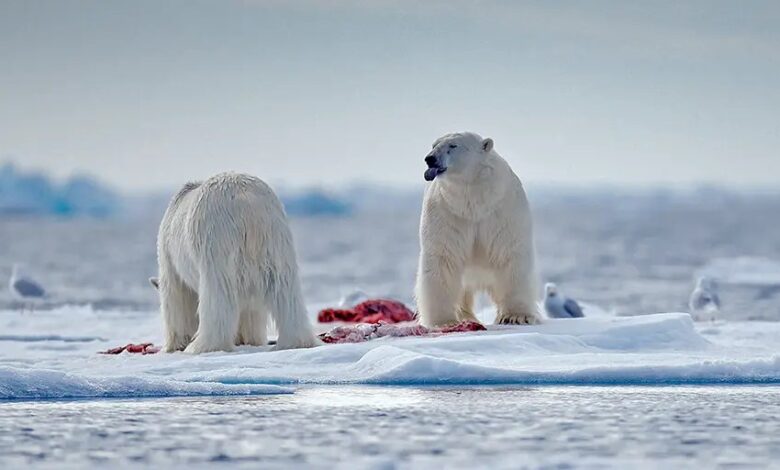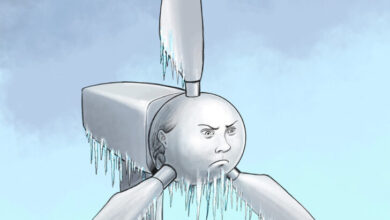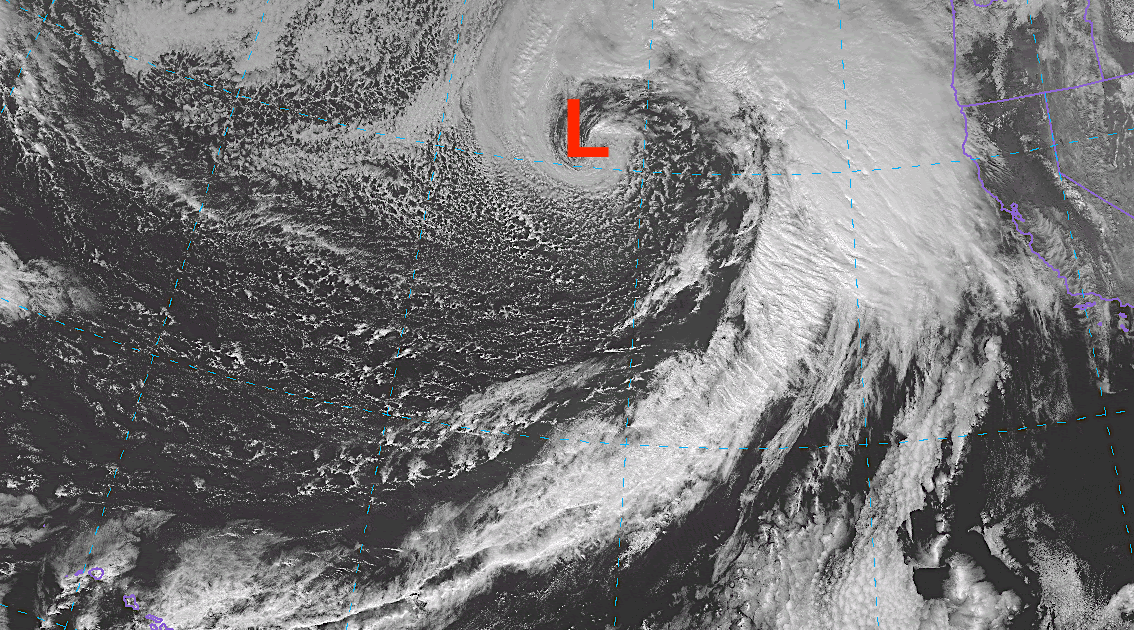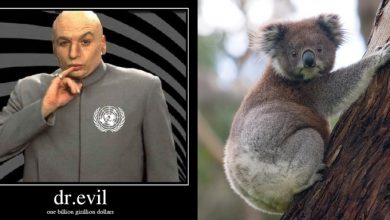NY Times pushes an implausible story of polar bear evolution and what makes a species – Watts Up With That?

Dr. Susan Crockford
Carl Zimmer over at the New York Times penned a misleading story of speciation, using the polar bear as an example. It explains polar bear evolution based on a genetic interpretation that ignores the fossil record, bear behaviour, and geological history. [h/t Kip Hanson].
In my opinion, this kind of ‘science communication’ is more misleading than enlightening because it fails to alert readers to the fact that the topic is actually more complicated and gives the impression that the author considers readers too stupid to understand a more accurate explanation.
Polar Bear Evolution does a better job for those who are really interested in the process: it doesn’t hide the complicated nature of speciation or polar bear evolution. It doesn’t pretend to present “the truth” but explains how a good scientist gets to a plausible explanation that best fits the evidence.
What is a species?
From the Zimmer article, “What is a species, anyway?” (New York Times, 19 Feb 2024):
In the 1940s, Ernst Mayr, a German ornithologist, tried solving this problem with a new definition of species based on how animals breed. If two animals couldn’t breed with each other, Mayr argued, then they were separate species.
By “breed with each other,” he meant hybridize. But Mayr also acknowledged that occasional hybridization between species does not negate his concept that good species generally don’t interbreed, which Zimmer doesn’t bother to say or doesn’t know. The issue for polar bears and brown bears (as for many other good species pairs), is how often hybridization actually happens.
What we know through observation and genetic analysis is that hybridization between polar bears and brown bears is not only very rare but it only goes one way. In the wild, hybridization always involves a male brown bear (aka grizzly) and a female polar bear, even in second-generation hybrids (see image below) and this photo essay. In Polar Bear Evolution, I explain this in detail, which comes down to differenced in dominance behaviour between the two closely-related species. Similar “one-way” hybridization is common in many species pairs for the same reason: the less dominant species is virtually always the female partner when two otherwise good species come together at mating time.
Shared genes don’t always mean hybridization
The next part of Zimmer’s article gets into the genetic basis of speciation, which has been recently confounded by claims of widespread hybridization, which he begins with an example from polar bear evolution (my bold):
You don’t have to be a mammalogist to understand that polar bears and brown bears are different. Just one look at their white and brown coats will do.
The difference in their colors is the result of their ecological adaptations. White polar bears blend into their Arctic habitats, where they hunt for seals and other prey. Brown bears adapted for life on land further south. The differences are so distinct that paleontologists can distinguish fossils of the two species going back hundreds of thousands of years.
And yet the DNA inside those ancient bones is revealing an astonishing history of interbreeding between polar bears and brown bears. After the two lineages split about half a million years ago, they exchanged DNA for thousands of years. They then became more distinct, but about 120,000 years ago they underwent another extraordinary exchange of genes.
Between 25,000 and 10,000 years ago, the bears interbred in several parts of their range. The exchanges have left a significant imprint on bears today: About 10 percent of the DNA in brown bears comes from polar bears.”
Zimmer is citing the work of Ming-Shan Wang and colleagues (2022) as his sole reference to explaining polar bear evolution. As I explain in my book, Wang and colleagues should have admitted that the evidence of shared genes they found in polar bears and brown bears could mean that ancient hybridization events took place OR that both species retained some genes from a recent ancestor they both have in common (e.g. Cronin et al. 1991, 2014; Kutchera 2014; Kumar 2017). They preferred the hybridization interpretation because it makes a more interesting and dramatic story but that doesn’t make it true.
And as Zimmer’s additional examples show, this “hybridization” story is becoming the preferred explanation much more often, including for some groups of birds, which is creating a confusing situation. It appears more and more geneticists are conveniently forgetting or ignoring the fact that shared genes do not necessarily mean ancient hybridization.
When shared genes crop up, you need to look at more evidence to get the bigger picture, as I’ve done in for polar bears my book, summarized in this blog post. You need to look at dominance behaviour, as explained above, as well as the fossil record and geological history.
I show that polar bears could not have evolved 500 thousand years ago (kya) because at that time brown bears did not exist in most areas of Eurasia and it was also an interglacial period, so there were no continental ice sheets to push brown bears offshore onto sea ice. The fossil evidence of brown bears is excellent and we know it was not until about 200kya, after a long warm interglacial period, that brown bears were living across Eurasia from Britain to Kamchatka, which set up conditions during the next severe Ice Age for polar bears to split off as a new species when continental ice sheets moved down from the Arctic.
The evidence suggests the most plausible time for the rise of the polar bear as a new species was about 140kya at the height of the severe MIS 6 glacial period (see below, from Crockford 2023a).
The genetic evidence for timing precisely when polar bears arose varies greatly among more than a dozen distinct studies, and Zimmer cites only the most recent one (Wang et al. 2022) as if it must necessarily be the most accurate. He could at least have acknowledged that different studies existed. The chart below, from my book, summarizes the suggested timing of polar bear speciation from these studies (“T & S” is Talbot and Shields 1996):
Geneticists have recently made some very bold statements about polar bear evolution, see here and here, often to support an interpretation that implicates future predictions of catastrophic global warming. My research over more than 20 years shows that while genetics has been able to give us some critical insights into evolution, it still cannot provide any kind of plausible explanation for exactly how or why speciation actually happens (Crockford 2023b).
Distinguishing species from subspecies, as Zimmer explains, is a contentious issue but it isn’t likely to go away any time soon.
References
Bidon T., Janke, A., Fain, S. et al. 2014. Brown and polar bear Y chromosomes reveal extensive male-biased gene flow within brother lineages. Molecular Biology and Evolution 31(6):1353–1363.
Bidon, T., Schreck, N., Hailer, F., et al. 2015. Genome-wide search identifies 1.9MB from the polar bear Y chromosome for evolutionary analysis. Genome Biology and Evolution 7(7):2010-2011.
Cahill, J.A., Green, R.E., Fulton, T.L., et al. 2013. Genomic evidence for island population conversion resolves conflicting theories of polar bear evolution. PLoS Genetics 9(3): e1003345.
Crockford, S.J. 2023a. Polar Bear Evolution: A Model for How New Species Arise. Amazon Digital Services, Victoria. https://www.amazon.com/dp/1778038328
Crockford, S.J. 2023b. The species problem and polar bear evolution. ResearchGate preprint, DOI: 10.13140/RG.2.2.20218.06089 https://www.researchgate.net/publication/372160076_The_Species_Problem_and_Polar_Bear_Evolution
Cronin, M.A., Amstrup, S.C. and Garner, G.W. 1991. Interspecific and intraspecific mitochondrial DNA variation in North American bears (Ursus). Canadian Journal of Zoology 69:2985-2992.
Cronin, M.A., Rincon, G., Meredith, R.W., et al. 2014. Molecular phylogeny and SNP variation of polar bears (Ursus maritimus), brown bears (U. arctos), and black bears (U. americanus) derived from genome sequences. Journal of Heredity 105(3):312–323.
Davison, J., Ho, S.Y.W., Brayk, S.C., et al. 2011. Late-Quaternary biogeographic scenarios for the brown bear (Ursus arctos), a wild mammal model species. Quaternary Science Review 30:418–430.
Edwards, C.J., Suchard, M.A., Lemey, P., et al. 2011. Ancient hybridization and an Irish origin for the modern polar bear matriline. Current Biology 21:1251–1258.
Hailer, F. 2015. Introgressive hybridization: Brown bears as vectors for polar bear alleles. Molecular Ecology 24(6):1161–1163.
Hassanin, A. 2015. The role of Pleistocene glaciations in shaping the evolution of polar and brown bears. Evidence from a critical review of mitochondrial and nuclear genome analyses. Comptes Rendus Biologies 338:494-501.
Kumar, V., Lammers, F., Bidon, T., et al. 2017. The evolutionary history of bears is characterized by gene flow across species. Scientific Reports 7:46487
Kutschera, V.E., T. Bidon, F. Hailer, J.L. et al. 2014. Bears in a forest of gene trees: Phylogenetic inference is complicated by incomplete lineage sorting and gene flow. Molecular Biology and Evolution 31:2004–2017.
Kurtén, B. 1968. Pleistocene Mammals of Europe. Weidenfeld and Nicolson, London.
Lan, T., Leppälä, K., Tomlin, C., et al., including Lindqvist, C. 2022. Insights into bear evolution from a Pleistocene polar bear genome.Proceedings of the National Academy of Sciences USA 119(24):e2200016119.
Lindqvist, C., Schuster, S.C., Sun, Y., et al. 2010. Complete mitochondrial genome of a Pleistocene jawbone unveils the origin of polar bear. Proceedings of the National Academy of Sciences USA 107:5053-5057.
Liu, S., Lorenzen, E.D., and Fumagalli, M. 2014. Population genomics reveal recent speciation and rapid evolutionary adaptation in polar bears. Cell 157:785-794.
Miller, W., Schuster, S.C., Welch, A.J., et al. 2012. Polar and brown bear genomes reveal ancient admixture and demographic footprints of past climate change. Proceedings of the National Academy of Sciences 109(36):E2382–E2390.
Talbot, S.L. and Shields, G.F. 1996. Phylogeography of brown bears (Ursus arctos) of Alaska and paraphyly within the Ursidae. Molecular Phylogenetics and Evolution 5:477–494.
Wang, M.-S., Murray, G.G.R., Mann, D., et al. 2022. A polar bear paleogenome reveals extensive ancient gene flow from polar bears into brown bears. Nature Ecology and Evolution 6:936–944.
Yu L., Li Y.-W., Ryder O.A. and Zhang Y. 2007. Analysis of complete mitochondrial genome sequences increases phylogenetic resolution of bears (Ursidae), a mammalian family that experienced rapid speciation. BMC Evolutionary Biology 7:198–209.




